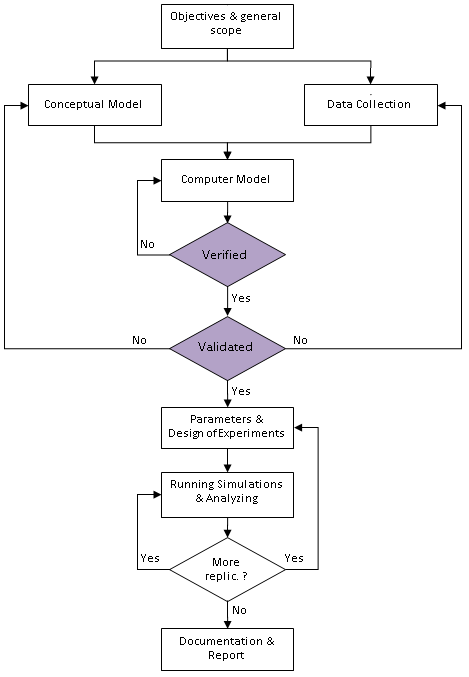Once the considerable task of building a simulation model is done, one could think the work is almost over, and move to exploiting stage. Not at all! Even if building and coding a model is long and significant, a delicate step remains before daring to use the model: validation.
Model validation tries to show that the computer model is a reliable enough representation of the real-world model, within the boundaries of the scope defined for this simulation.
We will first discuss some principles, and will in a second part list some helpful tools for model validation as well as for model verification.
Validate with regard to simulation objectives
We have seen that a model is built with specific objectives, and so its validity will be determined in relation to these objectives. If the model should answer a set of questions, model validity should be checked for each question. The main results indicators must have been defined beforehand, and with an explicit level of precision.
First of all, the conceptual model (that is, all the information resulting from the specifications, the process description, the diagrams and the words exchanged to describe the real system and the aims of the simulation) must be correct and sufficient to meet the objective. Often here the simulation service provider will have to question the end user to get reliable management rules, trustful distributions, and accurate flow diagrams. Sometimes, for lack of time or preparation, the model requester provides wrong information about the logics of the system, or rough assumptions. Validation is therefore made more complicated…

Data Validation
Being casual with data is impossible, at any stage of the project!
We just stated that only correct data could lead to a reliable conceptual model.
But including at the level of operational validation, and then running simulations, very often more than half bugs or inconsistent simulation results come from incorrect or fragmentary input data. One should take the time to fill with care, and verify all required data are correctly given (the best thing being to store them in a database, to protect internal consistency). Playing with data when running simulations implies having a good knowledge of the process as well as understanding the relevant magnitude of the different values.
Ask for advice
An experienced modeler may tell when the simulation model is valid, relying on various tests carried along model development. Still, it can be tricky to decide alone whether the results are correct or not, even after verifying ten times the range of values, even after adding the most accurate indicators to the model. A right approach consists in involving the future users of the model in the validation process and in the estimate of expected results: the model will gain in credibility.
Conclusion
Model validation is quite a delicate step in building industrial simulation models. One must show patience, thoroughness, and care. It is in fact a process that should not start when the computer model is finished, but already during the joint validation of technical specifications. Finding at the end of a project errors in the process description or in the selection of indicators will lead to some damage…
But ensuring a 100% validated model is complicated and long – therefore costly! A reasonable validation is possible: it will be made easier with an experienced modeler, with other participants familiar with the simulation approach, and if you follow our guidance – in another post.